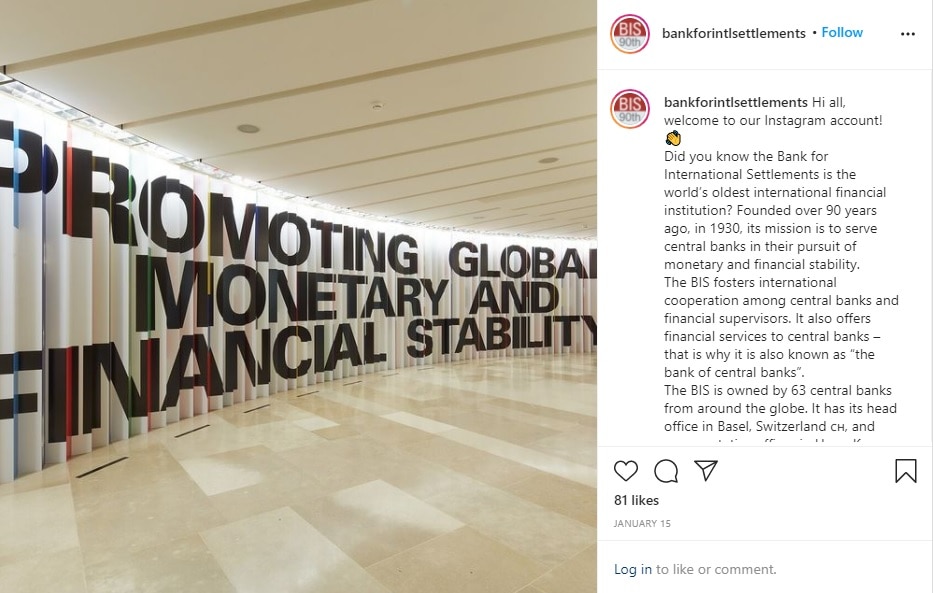‘Move fast and break things’ was famously Facebook’s mantra in its early years. Such an edgy outlook, championed personally by founder Mark Zuckerberg, sat well with the disruptive digital world – and continues to do so, albeit that Facebook itself has long moved beyond that philosophy.
Within banking, the motto could easily capture the philosophy of neo–banks – online-only disruptors here to challenge the status quo. But, within the broad sweep of the banking orbit, there are certain institutions that one would not naturally associate with the slogan: regulatory authorities such as central banks, for example.
Instead the global economy requires central banks to be the epitome of stability: bastions of circumspection in a world ravaged by Covid-19 and with heightened uncertainty about what the future holds in so many ways.
So it was noteworthy that a speech by Benoît Cœuré at the end of last year was entitled ‘Moving fast and not breaking things – central banks and innovation’:
Moving fast and NOT breaking things: @BCoeure, Head of #BISInnovationHub, speaks about Project Helvetia and other central bank innovations at the #WorldFintechFestival in Switzerland, in partnership with the Singapore Fintech Festival @sgfintechfest #CBDC https://t.co/A5YEjREa7j pic.twitter.com/CLDsuNtFhz
— Bank for International Settlements (@BIS_org) December 7, 2020
The wind of change blowing through financial services is starting to look more like a raging storm, with digitally-driven developments encouraging (some would say forcing) central banks to move fintech-inspired innovation to the heart of their operations.
Cœuré is head of the Bank for International Settlements (BIS) Innovation Hub, established in 2019 to help central banks to work more closely together on innovation-related topics. In his speech, given at the World Fintech Festival last December, he tackled the topic head on. “I want to talk for five minutes about central banks and innovation. In many minds, they are still somewhat at odds,” he said. “That is not unreasonable. But if that describes your mind, I want to convince you otherwise.”
The Frenchman, one of central banking’s best-known names having formerly been on the executive board of the European Central Bank (ECB), started by pointing out – as in central banks often tend to do – that central banks have always had to innovate, for example when responding to the global financial crisis more than a decade ago. But, in a direct reference to Zuckerberg’s early mantra, Cœuré acknowledged that the “intuitive view of innovation is different” and that, ultimately, accelerating digitalisation means the bulwarks of banking and monetary systems need to “understand these changes and have enough flexibility to respond to them”.
“Disruptive innovation – the kind that breaks things – is contrary to central banks’ public policy objectives,” he explained. “But the challenge remains. Central banks must move fast if they are to have the flexibility to evolve in this new system.”
The BIS Innovation Hub’s current work programme was revealed in January – a veritable smorgasbord of topics that are becoming very hot indeed, for example, central bank digital currencies (CBDCs) and green finance; and other topics that are warming nicely, for example, suptech/regtech:
Today the #BISInnovationHub releases its work programme around 6 themes: suptech/regtech, next generation financial market infrastructures, central bank digital currency, open finance, cyber security, and green finance. ⤵️ https://t.co/WI3qWySh1J
— Benoit Coeuré (@BCoeure) January 22, 2021
Cœuré’s World Fintech Festival speech focused on ‘Project Helvetia’ – a complex technical experiment between the BIS Innovation Hub, the Swiss National Bank and Zürich-headquartered financial market infrastructure operator SIX, integrating tokenised assets and central bank money – and CBDCs seem to have become the headline-grabber in respect of the central bank innovation agenda.
One indication of this was provided at the BIS Innovation Summit, a global virtual conference held in late-March that tackled topics ranging from artificial intelligence to decentralised finance.
The opening session featured leading central bankers – US Federal Reserve chairman Jerome Powell, Deutsche Bundesbank president Jens Weidmann and BIS’s own general manager Agustín Carstens – discussing ‘How can central banks innovate in the digital age?’ with Financial Times editor-at-large (USA) Gillian Tett.
Delighted to be moderating a discussion shortly with Jerome Powell @federalreserve Jens Weidmann @Bundesbank and Agustín Carsten discuss “How can central banks innovate in the digital age?” at the #BISInnovationSummit Hot topic!! https://t.co/QOeks9y37T
— Gillian Tett (@gilliantett) March 22, 2021
More than half the session was devoted to CBDCs (with the central bankers treading a cautious line). Digital currencies have – and will – continue to lead most conversations when central banks and innovation collide:
Central banks are moving fast – but without breaking things! Take a look at CBDC projects around the world, based on an updated version of our dataset #CBDCs https://t.co/JslNb3hDhF pic.twitter.com/P568E4wc2f
— Bank for International Settlements (@BIS_org) April 12, 2021
All sorts of interesting innovative partnerships are springing up. As an example from across the Pond, the Federal Reserve Bank of Boston last summer announced a multi-year collaboration with the Digital Currency Initiative at the Massachusetts Institute of Technology (MIT) to conduct CBDC technical research.
The BIS Innovation Hub’s geographic footprint is growing to include centres in London, Toronto, Stockholm, Paris and Frankfurt, as well as a strategic partnership with the Federal Reserve Bank of New York.
“Now more than ever it is important the central banking community does all it can to build a more effective, resilient and inclusive financial system, and technology is an important part of that effort,” said Bank of England (BoE) governor Andrew Bailey last June, when the BoE was announced as host of one the new centres. “By involving central banks and prudential regulators in this important work, we can help to ensure that innovation is consistent with our objectives of safety and soundness and financial stability.”
The BoE, like all central banks, is doing its best to keep up. It’s almost two years now since the 148-page ‘Future of Finance’ report, commissioned by the BoE, was published, setting out how it could keep pace with digital innovation.
Varun Paul leads on ‘Future of Finance’ at the BoE and is head of its fintech hub, which “engages with the fintech industry and works closely with all other parts of the Bank under a hub-and-spoke model,” he tells #DisruptionBanking. The BoE also has an innovation team within the Prudential Regulation Authority (PRA) focused on empowering supervisors with the latest tools and technology.
An increasing amount of innovation affecting financial services is taking place outside of the firms the BoE directly supervises so it has “increasingly had to engage with a wider variety of firms”, Paul says.
Recommendations in the Future of Finance report “have helped to ensure that thinking about the future of finance has become embedded in [BoE] business areas,” Paul adds. As well as the PRA’s innovation team, the BoE is exploring ways to support private innovation in payments, for example enabling its Real-Time Gross Settlement (RTGS) service to interface with a wider range of payment systems, including those using distributed-ledger technology (also see last month’s BoE announcement on so-called ‘omnibus accounts’).
Exploring CBDC is important, too, of course. The BoE has just created a CBDC division and a joint-taskforce with HM Treasury to co-ordinate the exploration of a potential digital pound.
All this is taking place against the demands on central banks caused by the pandemic. The OMFIF think-tank (Official Monetary and Financial Institutions Forum) has described threats to central bank independence while the Financial Times recently set out why central banks ‘should turn green’.
In the UK it certainly seems a long time since the era of ‘Steady’ Eddie George, the BoE’s governor from 1993 to 2003, let alone his predecessors.
Jenny Scott, the former BBC journalist and broadcaster who previously held senior roles at the BoE, tells #DisruptionBanking that it’s “increasingly critical that a central bank is not seen as closeted and in an ivory tower, and indeed is keeping up with innovation”.
But central banks still very much need to be ‘steady’ and governors hardly have the bandwidth to embark on maverick communications in the way that, for example, a fintech or tech CEO could have.
Scott, who was executive director of communications and latterly adviser to Mark Carney (BoE governor from 2013-2020), points out that a governor can certainly set the tone of an organisation, with Carney very open to exploring innovation (reflecting the growing prominence of fintech during his tenure).
“In a sense, fintech companies will always be five steps ahead [of central banks] as it’s in their job to be ahead,” she says. But central banks have to be careful in public activities, including their communications. “The pace is typically set by thinking ‘have we thought this through?’,” Scott reflects. “It’s very hard to do ‘kite-flying’ as a central bank.”
Her former boss has recently published a book, Value(s): Building A Better World for All, in which he writes: ‘I learned early on as a governor that a central bank might be effective but it wasn’t sexy’. That said, Carney has recently taken to social media:
Hello Twitter. #myfirstTweet pic.twitter.com/54UKYSW2RV
— Mark Carney (@MarkJCarney) February 15, 2021
Are central banks becoming a little more ‘Silicon Valley’, so to speak? About two-thirds of the way through the BIS Innovation Summit’s ‘How can central banks innovate in the digital age?’ session, as discussion touched on the impact of FB’s Libra (now Diem) project, the FT’s Tett asked whether, given the pressure to innovate (in a tech sense), central bankers can be “cool”. She also addressed the Fed’s Powell as ‘Jay’ instead of the more conventional ‘chairman Powell’. “I spent nine years here trying to get people to call me ‘Jay’,” joked the Fed chief. “That’s part of being cool…” teased Tett. “Yeah, absolutely,” responded Powell, quick as a flash.
In a similar vein, the Bank for International Settlements itself arrived on aesthetes’ social-media of choice, Instagram, in January, announcing to the world ‘Hi all, welcome to our Instagram account!’:

It was surely no coincidence that the photo choice on BIS’s first ‘Insta’ foray displayed the institution’s core message of ‘Promoting global monetary and financial stability’.
“Few people see us as a hotbed of innovation. Rather, we are seen as a bastion of conservatism. This is no bad thing! Being seen as conservative is a price well worth paying for the public’s trust,” BIS’s Carstens has said when describing ‘Central bankers of the future’.
Central banks know when boundaries are being pushed too far.
By Ian Hall
#BankForInternationalSettlements #BIS #BISInnovationHub #BISInnovationSummit #FederalReserve #BankofEngland #innovation #disruption #fintech #regulators #centralbanks #CBDC
‘Basel III – Enough Risk in Quantland’: in an article for #DisruptionBanking one year ago Ian took a look at the Bank for International Settlements and how its committees had reacted to coronavirus
















4 Responses